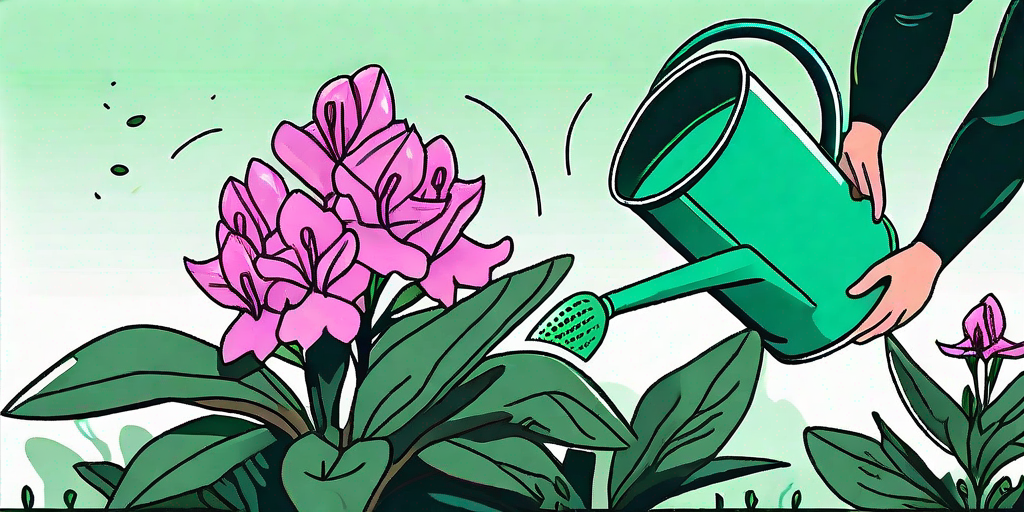
Rhododendrons are the divas of the garden world. They demand attention, they crave the spotlight, and they won't settle for anything less than the best. But, like any diva, they can be a bit... well, high maintenance. They need the right soil, the right light, the right water, and, most importantly, the right food. That's where rhododendron fertilizer comes in. It's the secret sauce, the magic bullet, the golden ticket to lush, vibrant, show-stopping blooms. But how do you choose the right fertilizer? And how do you use it? Well, buckle up, because we're about to take a deep dive into the world of rhododendron nutrition.
The Science of Rhododendron Nutrition
Before we get into the nitty-gritty of fertilizers, let's take a moment to understand why rhododendrons need them in the first place. You see, rhododendrons are a bit like the Goldilocks of the plant world. They don't like their soil too acidic or too alkaline. They prefer it just right - slightly acidic, to be precise. And they need a balanced diet of nutrients to thrive.
That's where fertilizer comes in. The right rhododendron fertilizer will provide a balanced blend of nitrogen, phosphorus, and potassium - the three primary nutrients that plants need to grow and bloom. But it's not just about the N-P-K ratio. Rhododendrons also need a host of secondary and micronutrients, like calcium, magnesium, and iron. And the best fertilizers will provide these in spades.
Nitrogen (N)
Nitrogen is the lifeblood of any plant. It's essential for photosynthesis, the process by which plants convert sunlight into energy. For rhododendrons, nitrogen promotes healthy leaf growth and vibrant green foliage. But be careful - too much nitrogen can lead to excessive leaf growth at the expense of blooms. It's all about balance, folks.
Phosphorus (P)
Phosphorus is the secret to lush, vibrant rhododendron blooms. It promotes healthy root development and aids in flower formation. A phosphorus deficiency can lead to stunted growth and poor blooming. So, if your rhododendrons are looking a bit lackluster, a phosphorus boost might be just what the doctor ordered.
Potassium (K)
Potassium is the unsung hero of plant nutrition. It helps regulate water uptake, strengthens cell walls, and aids in photosynthesis. In short, it helps your rhododendrons stay strong and healthy. A potassium deficiency can lead to weak, sickly plants with poor resistance to pests and diseases. So, don't skimp on the K.
Choosing the Right Rhododendron Fertilizer
Now that we've covered the basics of rhododendron nutrition, let's talk about how to choose the right fertilizer. There are countless options on the market, each with its own unique blend of nutrients. So, how do you choose?
First, consider the N-P-K ratio. As we've discussed, rhododendrons need a balanced diet of nitrogen, phosphorus, and potassium. Look for a fertilizer with a balanced N-P-K ratio, like 10-10-10 or 14-14-14. This will ensure that your plants get the nutrients they need in the right proportions.
Next, consider the secondary and micronutrients. Remember, rhododendrons need more than just N-P-K. They also need calcium, magnesium, iron, and a host of other nutrients. Look for a fertilizer that includes these in its formulation.
How to Apply Rhododendron Fertilizer
Alright, you've chosen your fertilizer. Now, how do you apply it? Well, it's not rocket science, but there are a few tips and tricks that can help you get the most out of your fertilizer.
First, timing is everything. The best time to fertilize rhododendrons is in the early spring, just before new growth begins. This will give your plants a nutritional boost just when they need it most. But be careful not to fertilize too late in the season, as this can lead to tender new growth that's vulnerable to winter damage.
Next, consider the method of application. Most rhododendron fertilizers are granular and should be sprinkled around the base of the plant, avoiding the stem. Water thoroughly after application to help the fertilizer penetrate the soil.
Frequently Asked Questions
Can I use a general-purpose fertilizer for my rhododendrons?
While it's possible to use a general-purpose fertilizer, it's best to use one specifically formulated for rhododendrons. These will have the right balance of nutrients to meet the unique needs of these plants.
How often should I fertilize my rhododendrons?
Generally, rhododendrons should be fertilized once a year in the early spring. However, if your plants are showing signs of nutrient deficiency, such as yellowing leaves or poor blooming, you may need to fertilize more frequently.
Can I over-fertilize my rhododendrons?
Yes, over-fertilization can be just as harmful as under-fertilization. Too much fertilizer can lead to salt buildup in the soil, which can damage the roots and lead to poor plant health. Always follow the manufacturer's instructions for application rates.
Conclusion
Feeding your rhododendrons like a pro is all about understanding their nutritional needs and choosing the right fertilizer. With the right balance of nitrogen, phosphorus, potassium, and other essential nutrients, your rhododendrons will reward you with lush, vibrant blooms that are the envy of the neighborhood. So go ahead, give your rhododendrons the royal treatment. After all, they're worth it.















